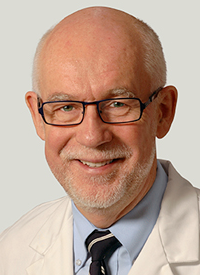Article
Cilta-Cel Demonstrates Durable Responses at 2 Years Across Multiple Subgroups in R/R Myeloma
Author(s):
Data from a longer follow-up analysis of the phase 1/2 CARTITUDE-1 trial demonstrated that all evaluated subgroups of patients with relapsed/refractory multiple myeloma maintained durable responses with ciltacabtagene autoleucel.
Andrzej Jakubowiak, MD, PhD

Data from a longer follow-up analysis of the phase 1/2 CARTITUDE-1 trial (NCT03548207) demonstrated that all evaluated subgroups of patients with relapsed/refractory multiple myeloma maintained durable responses with ciltacabtagene autoleucel (cilta-cel), according to findings from the study presented during the 2021 ASH Annual Meeting and Exposition.1
The phase 1/2b study (NCT03548207) comprised of 97 patients, as of February 11, 2021, who had received cilta-cel and all subgroups had achieved a consistently high overall response rate (ORR), comparable to the ORR in the overall patient population, ranging from 95.1%-100%. Moreover, in all subgroups 80%-100% of minimal residual disease (MRD)-evaluable patients achieved MRD negativity at a 10-5 threshold.
A subgroup of patients aged 65-years-old and older (n = 35), which included 8 patients 75 and older, achieved a notable ORR of 97.1% (95% CI, 85.1%-99.9%) and MRD negativity of 91.3% (95% CI, 72%-98.9%), said Andrzej Jakubowiak, MD, PhD, director of the Myeloma Program and a professor of medicine in the Biological Sciences Division at University of Chicago Medicine, in a video presentation of these data at ASH.
Other subgroups in the study included Black patients, patients with 3 prior lines of therapy (LOT), 4 or more LOT, patients with triple-class refractory disease, patients who are penta-drug refractory, those with standard or high cytogenic risk, patients with ISS stage III disease at baseline, patients with bone marrow plasma cells, BCMA expression, and those with a presence of baseline plasmacytomas.
The largest subgroup of patients were triple-class refractory (n = 85) and the analysis showed that they achieved an ORR of 97.6% (95% CI, 91.8%-99.7%) and MRD negativity of 92.6% (95% CI, 82.1%-97.9%).
“In most subgroups the median duration of response (DOR) was consistent with the overall population but was lower in patients whose baseline disease was stage III, had a high-risk cryogenic profile, and plasmacytomas at baseline,” explained Jakubowiak, who was the lead study author.
Overall results from the CARTITUDE-1 trial, at a median follow up of 18 months, showed an ORR of 98%, with 80% of patients achieving a stringent complete response.2 Median DOR in the overall population was 21.8 months (95% CI, 21.8-not estimable) with an 18-month progression-free survival (PFS) and overall survival (OS) of 66% and 81%, respectively.
Two-year PFS was also analyzed in the study and the data demonstrated an 18-month PFS and OS that were both consistent across all subgroups in comparison to the overall population. This notably included the group with high-risk cytogenetics who had an OS of 73.7% (95% CI, 50.5%-87.2%) but a lower PFS rate of 48.4% (95% CI, 25.1%-68.4%). However, the standard risk cytogenic group had a PFS of 64.1% (95% CI, 49.5%-75.5%) and OS of 73.6% (95% CI, 58.2%-84%). PFS and OS was also lower in patients with stage III disease with it not being estimable and patients with plasmacytomas at baseline.
Eligible patients, regardless of their subgroups, for the trial had multiple myeloma and had 3 or more prior LOT or were double refractory to a proteasome inhibitor (PI) and immunomodulatory drugs (IMiD) or had received a PI, IMiD, and anti-CD38 antibody. Patients on the trial received a single cilta-cel infusion at 0.75×106 CAR+ viable T cells/kg (range 0.5-1.0×106) 5 to 7 days after lymphodepletion with 300 mg/m2 of cyclophosphamide and 30 mg/m2 of fludarabine daily for 3 days.
The primary end point of the study was to assess the safety of cilta-cel and to confirm the recommended phase 2 dose and evaluate its efficacy. In terms of safety, the researchers found no new safety signals and that the adverse events (AEs) observed in the subgroups were consistent with the overall population.
Previously, the data demonstrated that the most common grade 3-4 hematological AEs in the overall population were neutropenia (95%), anemia (68%), leukopenia (61%), thrombocytopenia (60%), and lymphopenia (50%). Cytokine release syndrome (CRS) occurred in 95% patients with 4% at either grade 3 or 4. The median time to onset of CRS was 7 days with a median duration of 4 days. CRS was resolved in all patients except for 1 who had grade 5 CRS and hemophagocytic lymphohistiocytosis.
CAR T-cell neurotoxicity also occurred in 21% patients. Overall, 14 deaths occurred in the study with 6 due to treatment-related AEs, 5 due to progressive disease, and 3 due to treatment-unrelated AEs.
“Taken together, these results show that in most subgroups of patients (on cilta-cel) have durable responses after a few years with stable responses in high-risk patients,” Jakubowiak concluded.
References
- Jakubowiak A, Usmani SZ, Berdeja J, et al. Efficacy and Safety of Ciltacabtagene Autoleucel in Patients With Relapsed/Refractory Multiple Myeloma: CARTITUDE-1 Subgroup Analysis. Presented at: 63rd Annual American Society of Hematology Annual Meeting and Exposition; December 11-14, 2021. Abstract 3938. Accessed December 14, 2021. https://bit.ly/3qfzoxl
- Berdeja JG, Madduri D, Usmani SZ, et al. Ciltacabtagene autoleucel, a B-cell maturation antigen-directed chimeric antigen receptor T-cell therapy in patients with relapsed or refractory multiple myeloma (CARTITUDE-1): a phase 1b/2 open-label study. Lancet. 2021 Jul 24;398(10297):314-324. doi: 10.1016/S0140-6736(21)00933-8









